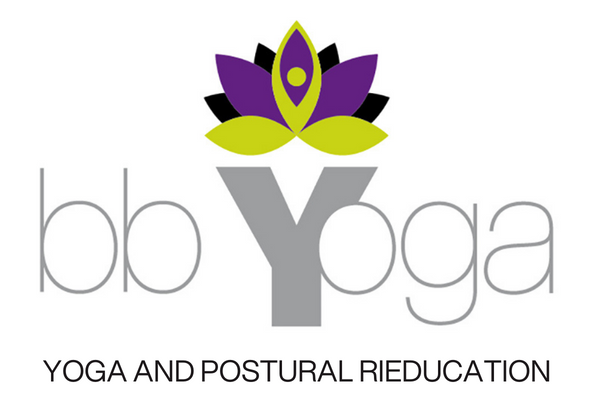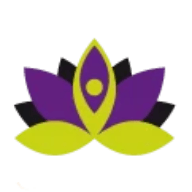"Be in your hands, be your hands".
(Françoise Mezieres)
Postural Rehabilitation
Mézières/Bertelè Method
Which disorders and pathologies can be treated?
In general:
Pain, discomfort, and tension in:
head, neck, back, shoulders, arms, elbows, wrists, hands, fingers, hips, knees, ankles, feet, toes - whether due to one/multiple traumas or occasional.
More specifically:
Spine:
- Idiopathic scoliosis
- Congenital or acquired torticollis
- Osteochondrosis, hyperkyphosis, hyperlordosis
- Osteoarthritis
- Disc herniation
- Sciatica
- Brachialgia
- Vertebral fractures
Shoulders and upper limbs:
- Periarthritis: lesions of the cuff, frozen shoulder, tendinopathy
- Tennis elbow Golfer's elbow
- Carpal tunnel syndrome
- Dupuytren's disease
- De Quervain's disease
- Trigger finger Rhizarthrosis
Hips and lower limbs:
- Congenital dysplasia
- Coxarthrosis
- Periarthritis
- Aseptic necrosis
- Knee valgus/varus
- Knee osteoarthritis
- Meniscopathy/chondropathy
- Tendinitis (Achilles, posterior
- tibial)
- Heel spur
- Plantar fasciitis
- Flat feet/varus, congenital and acquired
- Bunions, claw toes
- Results of bone, joint, musculo-tendinous trauma.
Neurological problems:
-
Cerebral palsy Coma aftermath -
Results of a stroke -
Multiple sclerosis Parkinson's disease -
Congenital and acquired spasticity/dystonia -
Complex syndromes -
Results of spinal cord injuries -
Learning difficulties and developmental delays.
What is the Mézières/Bertelè method?
The Mézières/Bertelè method is a very complex method for diagnosing, preventing, and treating postural problems, and is an exceptional tool for rehabilitating posture, relaxing and dissolving tensions, and also an excellent way for the patient to learn to listen to their body.
The main goal is to stretch, through specific postures and massages, the muscle chains, so that they no longer hold onto the joints, and so that other muscles can regain their function and recover lost tone.
Its application is strictly individual and based on the principle that muscles, like any elastic material, cannot stretch themselves, but an external force applied to the body is necessary for short and retracted muscles to be stretched and made more elastic, thus releasing tension to make more room for the joints and reducing pain.
The Mézières/Bertelè method requires an excellent knowledge of the musculoskeletal system and is still the best method of manual therapy for pain, tension, and pathologies of the musculoskeletal system.
Béatrice trained with Dr. Laura Bertelé, who, in 1984, was chosen by Françoise Mézières with two other colleagues to continue her method in her training school and around the world (https://www.metodobertele.it/).
How was this method born?
The Mézières Method is a physical therapy technique created and developed since 1947 by Françoise Mézières, which is designed to be performed individually and to treat the patient from a global perspective.
(https://www.metodobertele.it/il-metodo-bertele/#come).
Through a postural work based on global stretching manipulations, the treatment rebalances the different muscle chains by improving posture and relieving pain.
Starting from the premise that the statics and movements of the human being are carried out thanks to the joint action of bones, joints, and muscles, Mézières developed her technique through the observation of the system of muscle chains, which are particularly imbalanced in each person and which, over time, can be the origin of several pains.
The postural rehabilitation therapy gradually restores the global mobility of muscles and joints, balancing breathing, stretching shortened muscle chains, improving body awareness, and always with the active participation of the patient.
In addition to its therapeutic action on the back and other locomotor dysfunctions, this treatment has an educational and preventive vocation, allowing a re-harmonization of the body schema.
The treatment, therefore, addresses local pain by considering the body as a whole, since Mézières had observed that many times the protocols used for the treatment of joint or muscle problems were excessively analytical and treated only "locally."
For example, when faced with back pain, it is not uncommon to hear comments such as "you need to tone your back and abdominals," but if we consider the previous observations, we quickly understand that many back pains and deformities do not come from muscle weakness but rather from tissue rigidity such as muscles and fascia.
Rehabilitation must be global because muscle function is global: some muscles are attached to others, forming muscle chains, which is particularly evident for the posterior chain that extends from the skull to the toes.
Therefore, emphasis should be placed on muscle flexibility while respecting the capacities of each individual.
The basic principles of the method
he majority of muscles are organized into sets, called "chains" by Mézières.
The chains include the most ancient phylogenetic muscles; each chain behaves like a single large elastic band, often too short, too rigid, and almost always contracted, even when we sleep.
The first chain that Mézières defined is the posterior chain, the main axis to which the others are attached: it includes the long and powerful back muscles, which insert on the neck, on the entire spine down to the sacrum; the chain continues with the buttocks, the posterior muscles of the thigh and leg, those of the sole of the foot and the front of the leg, down to below the knee, like a sock always too short, whose superior-posterior border rises up to the neck.
Mézières then defined the two chains of the upper limbs which include the flexor and pronator muscles (which keep the elbows and fingers flexed and the upper limbs in pronation even when we are relaxed).
Finally, there are the two anterior chains: that of the neck, which pulls our head forward and in a position of "bottle waiting," and the antero-internal chain, which includes the diaphragm and the powerful iliacus muscle, which runs from the lumbar region to the femur.
The chains are all interdependent: any action of local elongation causes compensation, that is, shortening at one or more different points.
Therefore, segmental work is useless, if not counterproductive.
It is, therefore, necessary to prevent such compensations in order to lengthen the entire chain and not just the individual muscle.
What does a session look like?
It is a fully manual treatment consisting of maneuvers aimed primarily at loosening muscular hypertonicity, particularly in the muscles of the chains, to harmonize agonists and antagonists in search of the ideal and perfectly balanced body morphology.
Often, the pathology manifested in the patient is due to a compensatory mechanism triggered by an upstream imbalance; the therapist's task is to identify it, trace this mechanism back, and act on it to solve the downstream problem.
The technique is performed manually with appropriate maneuvers on the main muscle chains (which are: back; arms; neck, iliacus-psoas and diaphragm) to allow the antagonists (pectoral, abdominal, quadriceps) to tone, harmonizing the entire system with constant reference to the ideal morphology.
The subject is lying on a special bed or on a mat in supination.
The only aids used are small cushions of different sizes and densities and flexible bands.
The one-hour sessions are performed on a weekly basis for at least the first 5-6 sessions, then depending on the result obtained, they can be diluted to a biweekly or monthly rate.
Monthly maintenance is recommended for everyone.
In the most complex situations, two or more therapists participate in the sessions to lengthen the chains and correct compensations.
When a more radical and lasting posture change is necessary, weeks of intensive sessions are recommended; these weeks are organized in different locations in Italy by Dr. Bertelè and his team.
(for information on intensive weeks: https://www.metodobertele.it/settimane-intensive/).
Beatrice Bassi
Ashtanga Vinyasa Yoga
Postural rehabilitation therapist
Méthode Mézières/Bertelè
Saint Tropez - France
Email:
info@bbyoga.fr
Tel.
+33 624 794098
Menu
Copyright © 2021 bbYoga. All rights reserved - N ° SIREN 820942621
Confidentiality | Cookies |




